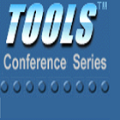In this work, we examine how fact-checkers prioritize which claims to fact-check and what tools may assist them in their efforts. Through a series of interviews with 23 professional fact-checkers from around the world, we validate that harm assessment is a central component of how fact-checkers triage their work. We also clarify the processes behind fact-checking prioritization, finding that they are typically ad hoc, and gather suggestions for tools that could help with these processes. To address the needs articulated by fact-checkers, we present a structured framework of questions to help fact-checkers negotiate the priority of claims through assessing potential harms. Our FABLE Framework of Misinformation Harms incorporates five dimensions of magnitude -- (social) Fragmentation, Actionability, Believability, Likelihood of spread, and Exploitativeness -- that can help determine the potential urgency of a specific message or claim when considering misinformation as harm. The result is a practical and conceptual tool to support fact-checkers and others as they make strategic decisions to prioritize their efforts. We conclude with a discussion of computational approaches to support structured prioritization, as well as applications beyond fact-checking to content moderation and curation.
翻译:暂无翻译



